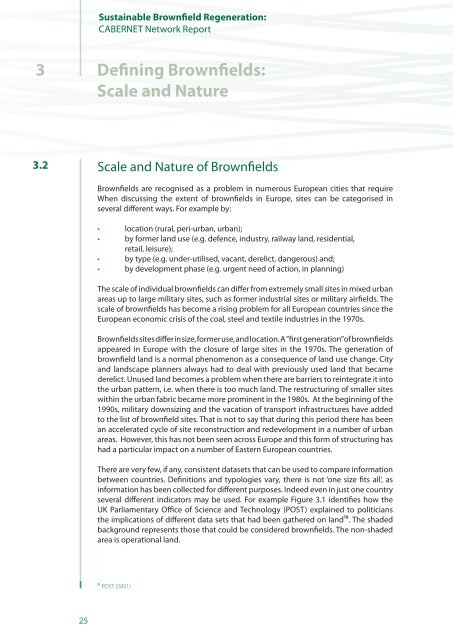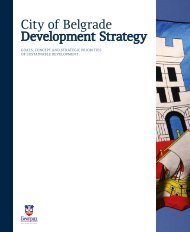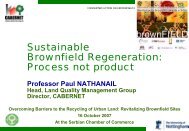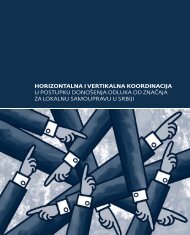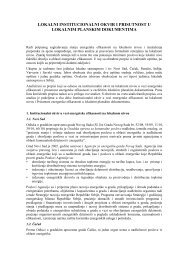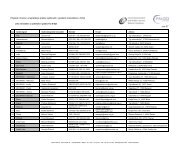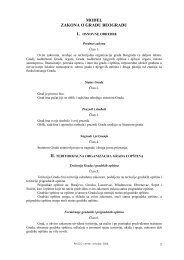Sustainable Brownfield Regeneration: CABERNET Network Report
Sustainable Brownfield Regeneration: CABERNET Network Report
Sustainable Brownfield Regeneration: CABERNET Network Report
You also want an ePaper? Increase the reach of your titles
YUMPU automatically turns print PDFs into web optimized ePapers that Google loves.
<strong>Sustainable</strong> <strong>Brownfield</strong> <strong>Regeneration</strong>:<strong>CABERNET</strong> <strong>Network</strong> <strong>Report</strong>3Defining <strong>Brownfield</strong>s:Scale and Nature3.2Scale and Nature of <strong>Brownfield</strong>s<strong>Brownfield</strong>s are recognised as a problem in numerous European cities that requireWhen discussing the extent of brownfields in Europe, sites can be categorised inseveral different ways. For example by:• location (rural, peri-urban, urban);• by former land use (e.g. defence, industry, railway land, residential,retail, leisure);• by type (e.g. under-utilised, vacant, derelict, dangerous) and;• by development phase (e.g. urgent need of action, in planning)The scale of individual brownfields can differ from extremely small sites in mixed urbanareas up to large military sites, such as former industrial sites or military airfields. Thescale of brownfields has become a rising problem for all European countries since theEuropean economic crisis of the coal, steel and textile industries in the 1970s.<strong>Brownfield</strong>s sites differ in size, former use, and location. A ”first generation” of brownfieldsappeared in Europe with the closure of large sites in the 1970s. The generation ofbrownfield land is a normal phenomenon as a consequence of land use change. Cityand landscape planners always had to deal with previously used land that becamederelict. Unused land becomes a problem when there are barriers to reintegrate it intothe urban pattern, i.e. when there is too much land. The restructuring of smaller siteswithin the urban fabric became more prominent in the 1980s. At the beginning of the1990s, military downsizing and the vacation of transport infrastructures have addedto the list of brownfield sites. That is not to say that during this period there has beenan accelerated cycle of site reconstruction and redevelopment in a number of urbanareas. However, this has not been seen across Europe and this form of structuring hashad a particular impact on a number of Eastern European countries.There are very few, if any, consistent datasets that can be used to compare informationbetween countries. Definitions and typologies vary, there is not ‘one size fits all’, asinformation has been collected for different purposes. Indeed even in just one countryseveral different indicators may be used. For example Figure 3.1 identifies how theUK Parliamentary Office of Science and Technology (POST) explained to politiciansthe implications of different data sets that had been gathered on land¹⁸. The shadedbackground represents those that could be considered brownfields. The non-shadedarea is operational land.¹⁸ POST (2001)25


